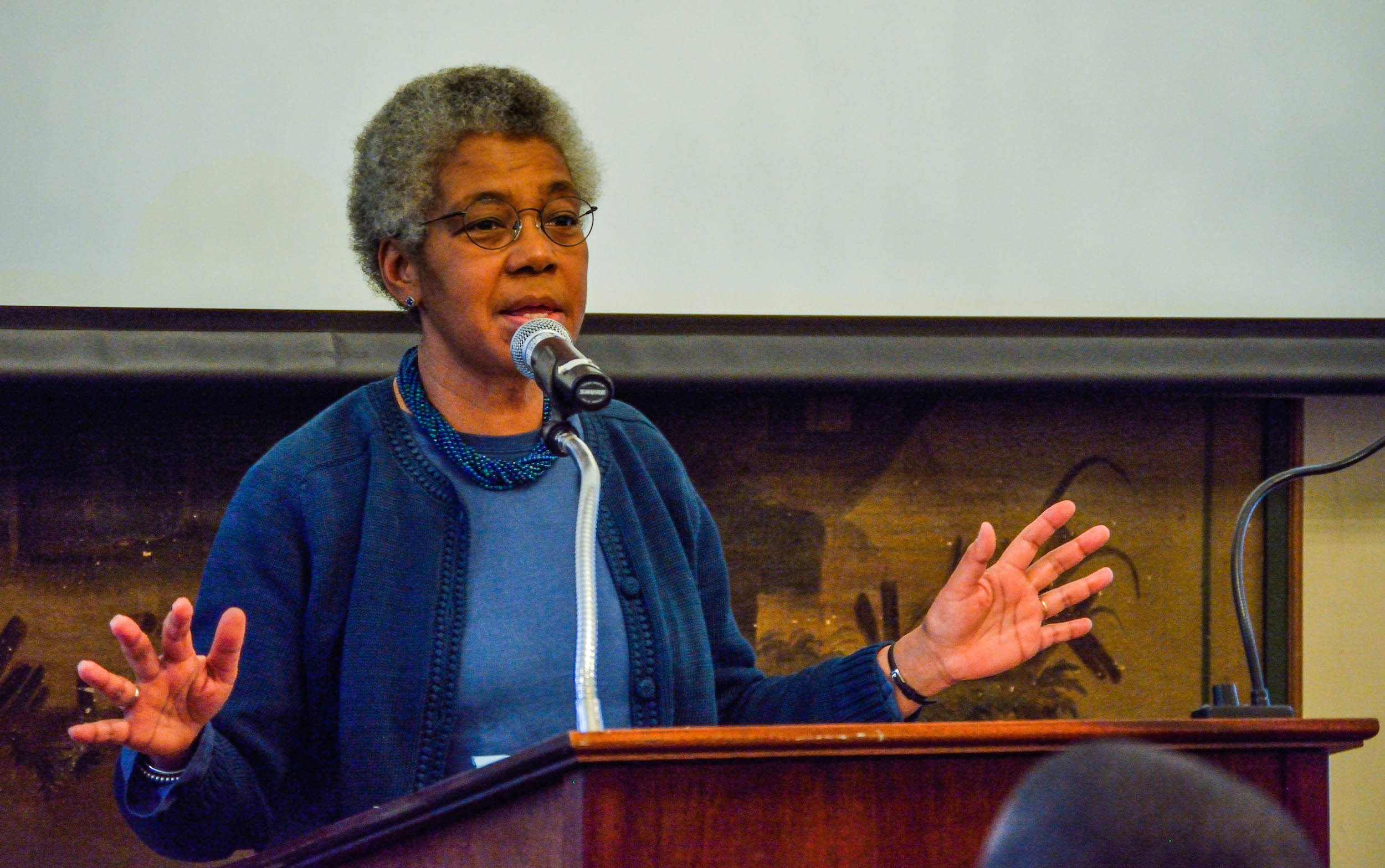
On Wednesday, Feb. 17, Russell House overflowed with attendees of the third annual Richard Slotkin American Studies Lecture. This year’s speaker was Columbia University Professor of History Barbara J. Fields, who discussed the book she wrote with her sister, “Racecraft: The Soul of Inequality in American Life.” Fields’ work challenges the common misconception that race gives rise to the practice of racism, arguing instead that through what Fields calls “racecraft,” racism produces the illusion of race.
Olin Professor of English, Professor of American Studies, and Chair of American Studies, Joel Pfister, opened the evening by reading a letter from Olin Professor of English emeritus and founder of American Studies at the University Richard Slotkin.
“Understanding the language of ‘race’ as the product of magical thinking is brilliant,” Pfister read. “I only wish you had written it while I was still teaching…[Compared with my course,] I think your approach is much more effective in the analysis of language to expose the perverse poetics of contemporary political and social speech.”
Pfister then introduced Fields.
“For me, the words I associate with Barbara Fields are ‘critical rigor’ and ‘demystification,’” Pfister said. “She just cuts through the junk.”
Fields opened her presentation with a projected video of British comedian Gina Yashere’s sketch, “Stopping the Police.”
“I am the only black person in America who is not afraid of the police,” Yashere said in the video.
In the video, she reenacted a conversation with a police officer who followed her for 12 miles only to be confused by her British accent.
“Oh I’m sorry ma’am, I thought you were black,” Yashere said, imitating the officer.
The video elicited laughs, but Fields reminded the audience of the recognizable and tragic truth behind Yashere’s seemingly far-fetched sketch.
“In February of 1999, New York City police officers, on the lookout for an armed serial rapist, shot and killed Amadou Diallo, an immigrant from Guinea,” Fields said.
Fields analyzed the media’s reaction to the event.
“There was much talk at the time about the danger of black identity when armed police officers were on the loose,” Fields said. “But of course, it had nothing to do with identity, though only a few of the commentators at the time recognized that. It was not his identity that resulted in his death, but rather the way the police identified him, without his having a say in the matter.”
The police officers were looking for their archetype criminal: an African-American man, armed and dangerous by nature.
“But that, of course, is not something you can see with the naked eye,” Fields said. “The officers saw, or thought they saw anyways, through a veil of racecraft. They killed Amadou Diallo, in other words, because they thought he was black. That is racecraft at work.”
Fields explained the terms race, racism, and racecraft.
Race is ancestry reflected in someone’s physical appearance. However, though everyone has ancestry and genes, not everyone’s ancestry and genes count as race.
Between 1982 and 2009, nine off-duty police officers were killed by fellow officers who mistook them for criminals. Of the nine killed, eight were African-American and one was Latino.
“Why is it that ancestry or appearance does not kill off-duty white officers in mistaken identity shootings by other officers?” Fields asked. “Answer: Ancestry or appearance cannot produce an adverse social result without a middle step, and that missing middle step is racism, the practice of a double standard based on ancestry with its associated ideology.”
Fields explained that racism is an action, and not just a state of mind. The relation between race and racism defines racecraft.
“Racecraft is the process by which racism becomes race,” Fields said. “Most people think it goes the other way around; that people see race and then they act on racism. My sister and I argue it’s the other way. You don’t see race until racism has produced it.”
Fields said that racecraft is like a magic trick.
“But racecraft needs no conjurer on the stage, because the onlookers do both the conjuring and the gazing….Racecraft creates an illusion that never dissipates,” Fields said.
Fields described racecraft in present day.
“Illusion has transformed Flint, Michigan into a black city, even though 43.4 percent isn’t black,” she said.
By turning Flint into a “race situation,” officials can avoid fixing the water problem and giving proper medical care to those who are affected. She said that racecraft can no longer cover up inequality.
“It provides us with an opportunity to do something else, to do something different, to see through the veil of racecraft,” she said.


Leave a Reply